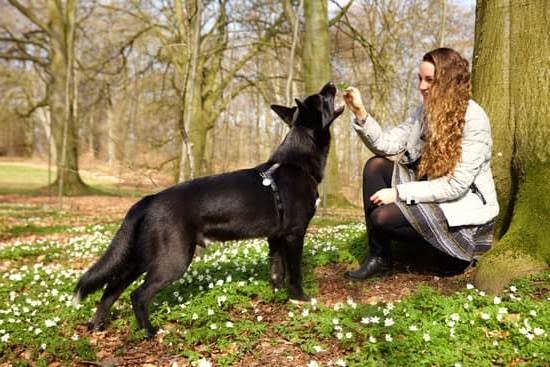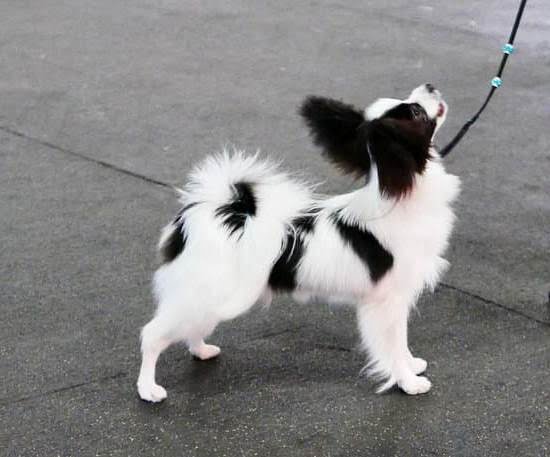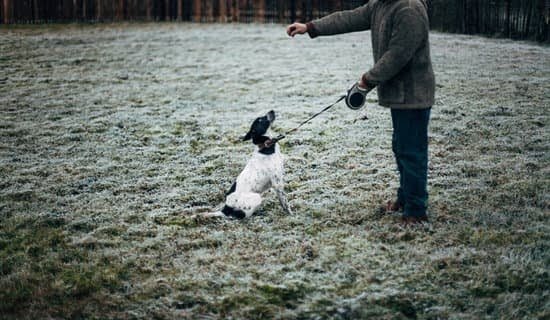Introduction
Dogs that snatch items from people can be very dangerous, particularly for small children. Unfortunately, some dogs are naturally predisposed to snatching items out of our hands or away from us due to learned behaviors or instincts. In order to ensure the safety of everyone, it is important to train your dog not to snatch items by proactively teaching them good behaviors and discouraging bad ones.
In order to create a safe environment while around people, it is important to understand what causes a dog to snatch items in the first place. For some breeds, this behavior is an instinctual way of showing dominance over humans or even other animals. Other types of dogs may simply have been taught by their owners that taking things without permission is acceptable; this gets compounded when owners reward their pets with treats for doing so, leading the animals to believe that if they do snap up bad treats then they’ll get food as a reward. Additionally, sometimes the display of instinctively snatching an item is rooted in fear or insecurity; dogs who perceive someone as a threat may feel the need to “protect” themselves by snapping at something out of their reach.
To help train your dog not to snatch items from people, start by teaching your pup basic obedience commands such as “leave it” and “drop it” which can be used when you notice him about to grab something out of our hand or away from us. After issuing these commands make sure you provide your pup with positive reinforcement when they obey so they associate leaving the item alone with good things (treats are usually a great way!). If your pet continues attempting to snatch items despite these commands you should create negative consequences like giving them time outs or removing privileges (such as going on walks) until they learn that snatching objects won’t be tolerated and will only result in unpleasant outcomes. Eventually your pet will begin understanding what behaviors are appropriate and expected of him/her when interacting with others!
Positive Reinforcement Techniques
1. Start by determining what your goal is: reinforcing a behavior such as “not snatching” with positive reinforcement will help you get there quicker.
2. Before starting, make sure you have the necessary items: treats and other rewards, such as toys and praise.
3. Practice patience! If your dog does not respond correctly to the command stop immediately but don’t discourage them – allow them to relax and keep practicing until they do it right!
4. Introduce a trigger: every time before your dog snatches something, you should give your dog a cue (such as a specific word or phrase). This will let them know that they are being asked to do something, and can help reinforce desired behaviors going forward.
5. Give the command in an upbeat tone and reward once they respond positively: once they have stopped attempting to snatch the item, give them verbal praise and reward them with their favorite treat or toy.
6. Repeat the steps outlined above consistently over time until your pup has mastered it: consistent practice will ensure that this behavior is ingrained in their memory for good! Make sure to recognize progress as it is made for added reinforcement of desired behaviors.
7. Problem-solve when mistakes occur: if your pup continues snatching items even after being given a cue, take some time to analyze why this may be happening – are they not responding to the cue or are there environmental factors at play? Once you identify the problem areas, implement additional steps accordingly to properly address these issues for long term results that benefit both pet and owner alike!
Redirection and Distraction Strategies
Redirection is a great tool to teach a dog not to snatch. Whenever the dog goes for an object, like a toy or food item, redirect him to another activity. Dangle a different toy or piece of food in front of him and encourage him to focus his attention on something else instead. You can also use verbal cues and other types of stimuli, such as clapping your hands, making loud noises, or saying “Uh-uh!” The key is to get the dog’s attention and get him to focus on the alternate stimulus instead of what he is trying to snatch up.
Distraction is another strategy that you can use when trying to train a dog not to snatch. Distraction can involve anything that gets the pup’s attention away from what he wants – such as another activity, toy, treat, or game. For example, if your pup tries to grab something off the counter you could immediately start clueing in a game with his toys or offering him treats while praising him for having behaviors that aren’t snatching. Staying positive with rewards will help reinforce good behavior more effectively than scolding and punishment ever could. Remember though that any distraction must be used in combination with redirection – it is important to have both techniques working together for success when it comes to training a pup not to snatch things up.
Incentives and Rewards
Incentives and rewards are a powerful tool for training dogs not to snatch. Rewarding good behaviour helps reinforce it, while punishing bad behaviour can help to reduce the likelihood of it occurring in the future. Rewarding a dog for not snatching can be as simple as providing verbal praise or petting when something is given away without being taken, or offering treats and/or toys when there is no desire to snatch.
Rewards should always be tailored to the individual dog’s preferences. For example, some dogs will work hard for a treat but others may prefer verbal praise or physical contact such as a run around the yard or petting. When deciding what type of reward system to use, you should consider your dog’s motivations and interests.
It’s also important to remember that consistency is key. Training with incentives and rewards should be done every time; it will take numerous consistent rewards before your dog learns that not snatching certain objects has a greater reward than snatching them does. Additionally, frequent refresher sessions can greatly strengthen this connection further so that your pup learns that his good behaviour will result in an even bigger reward down the line.
Tools and Resources
Training treats: Training treats are a great way to reward your dog for good behavior and help to reinforce positive behaviors. Be sure to choose healthy treats that your pup will find appetizing, as this will keep them motivated during the training process.
Clicker: A clicker is an effective tool to use when training your dog. When you press the clicker, it releases an audible cue that indicates the exact time that you have successfully completed a requested behavior from your pup. With consistent usage over time, the sound of the clicker can become associated with good behavior and signify that a treat reward is coming afterward.
Dog crate: Dog crates provide a safe space for training sessions as well as times when you need to step away from your pup but don’t want them having unrestricted access to valuable objects in your home. Crates also help puppies feel secure due to their den-like nature, which can be helpful when introducing new commands or behaviors.
Patience and consistency: Patience and consistency are key when it comes to training any animal. Allowing plenty of space in between repetitions allows your pup time to comprehend instructions and offers them ample opportunity for success on each try so they can stay motivated during their learning journey.
Troubleshooting
Training your dog not to snatch food should involve a multi-pronged approach. Here are some tips to help minimize setbacks and ensure success:
1. Establish rules and boundaries: Make sure your dog knows it’s unacceptable to snatch food, and that stealing results in no reward or attention from you.
2. Do not be tempted to give rewards for “snatch avoidance”: This may inadvertently further the behavior by rewarding the dog for not taking something, as opposed to training them for good manners.
3. Watch out for environmental triggers: If you know certain environments lead your dog to snatch food, avoid these situations until your pet is more well-trained.
4. Use positive reinforcement techniques: Reward good behavior with verbal praise or treats whenever possible. Additionally, try clicker-training techniques to reward incremental successes throughout the course of training.
5. Utilize distraction techniques: When necessary, divert your pup’s attention away from low-value items such as food waste on walks with toys or games of fetch.
6. Take timeouts seriously: If your pup snatches something during practice sessions, immediately end the session and issue a timeout period in another room without any interaction from you or anyone else for several minutes (or longer if needed). Afterward, start again and help the dog gain confidence in different scenarios that challenge problem areas one step at a time before moving onto the next level of difficulty/distraction. Taking a break will also allow you refresh and stay patient throughout the process!
Conclusion
If you desire to train your dog to not snatch, there are a few key steps you should take. First, start by teaching your pup basic commands such as “leave it” and “wait”. Emphasize the use of positive reinforcement when your pup follows instructions. Work on consistent recalls and ensure that your pup understands the reward for following instructions is always greater than any potential reward they may get from snatching something up. Additionally, consider ways to deter them from snatching in the first place; using deterrent sprays or bitter taste deterrents if necessary. Finally, prevent your pup from getting into trouble to begin with; create cues that redirect their attention away from potentially dangerous items, like “let’s go for a walk instead” or “OUTSIDE!”
Overall, training your pup to not snatch requires patience and consistency on your part as an owner or trainer. Start out by introducing basic commands such as “leave it” and “wait”, then use positive reinforcement and rewards whenever good behaviour is displayed. Deterrent sprays and bitter taste deterrents can help stop some behaviours in their tracks. Furthermore, prevent difficult situations altogether by establishing cues that redirect their attention away from risky items. With time, effort, and consistency, the behaviours which can lead to dangerous snatching can be minimized or eliminated altogether!

Welcome to the blog! I am a professional dog trainer and have been working with dogs for many years. In this blog, I will be discussing various topics related to dog training, including tips, tricks, and advice. I hope you find this information helpful and informative. Thanks for reading!





